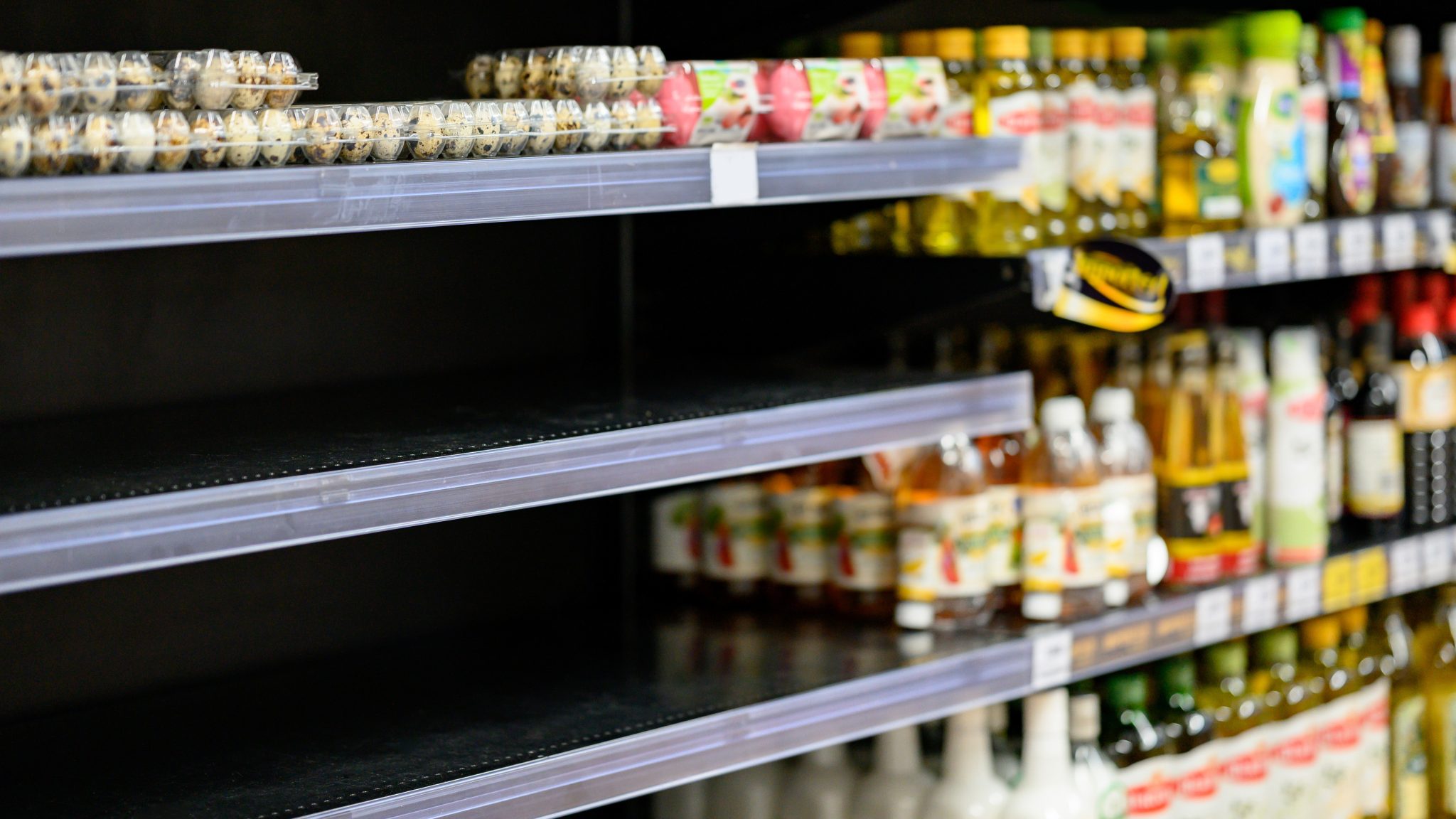Urban Extension

Americans expect a variety of healthy and safe food on grocery store shelves. This is possible due to a complex food supply chain. The food supply chain involves the process it takes to move food from producers to consumers. This process includes the rapid and safe growing, handling, and transporting of food by air, land, and sea. Our food supply chain system, however, faced extraordinary disruptions as officials worked to prevent the spread of COVID-19. From border closures to restricted transport channels, social distancing, and travel bans, the foodservice industry came to a near standstill at the start of the COVID-19 pandemic.
Additionally, regardless of the product or where it is moved, the United States (U.S.) food industry relies heavily on human labor to process food from the farm to market. For example, farmers sow seeds and harvest fruits and vegetables or raise livestock. Workers package food and drive trucks to transport the food across the country. Workers also load and unload food on shipping containers from across the oceans. In other words, the U.S. food industry is only as strong as the people who maintain its operations. From farmers and field workers to transporters and retailers, the COVID-19 pandemic caused disruptions at every stage of the food supply chain.
Workflow Disruptions
Farm Production
Farmers are skilled at adapting to changing circumstances be it droughts, floods, or pest infestations. Overcoming unpredictable difficulties goes with the job. At the onset of the pandemic, however, farmers and other food producers experienced major workflow disruptions whether on the farm or at food processing plants.
For example, harvesting fruit and vegetables require teams of people working closely together to pick produce at its peak for flavor and freshness. COVID, however, caused risks to produce workers’ health. Also, on the farm, crops planted early in the year were left to rot, plowed back into the field, or composted. Unpurchased milk was dumped.
In addition, food producers faced high labor costs, production uncertainty, and fewer produce distribution options. For example, there was no need for places like hotels, restaurants, and schools to purchase wholesale produce. With consumers under “stay-at-home” mandates, these businesses or organizations did not have a steady flow of customers.
Plant Production
In regard to livestock, with reduced processing plant capacity and no place to house excess animals, some farmers were forced to euthanize livestock. The livestock that made it through processing to consumer tables, did so at higher costs to consumers.
At meatpacking plants, workers were also susceptible to outbreaks of COVID-19 during every shift. Cool temperatures needed to store meat, the proximity of workers, and the physical toil required to do the job made plant environments conducive to incubating viral spread. Gaps in production occurred due to sick workers or workers too afraid to come to work. Plant closures caused packing disruptions since many manufacturing companies rely heavily on facilities and source materials from overseas.
Impact on Truck Drivers
Food is generally transported by trucks across the nation. Although there is considerable debate over the shortage of truck drivers in the U.S., COVID-19 added pressure to the transportation industry. Pandemic fears intensified stressors due to abrupt schedule changes and adverse road and weather conditions. Additionally, truck drivers faced tight deadlines, long delays (detention times) at loading docks, and unexpected traffic delays. Our nation relied heavily on these drivers to deliver goods to keep store shelves stocked.
Consumer Impacts
Production slowdowns and consumer excess buying led to empty grocery store shelves and distressed customers. As a result, store owners shifted hours to allow workers to restock shelves. Most retailers also adopted new safety restrictions, such as special hours for seniors, social distancing guidelines, and limited the number of shoppers in a store at a time.
As consumers experienced empty shelves, they also paid more for food. Higher prices and fewer products caused American consumers to adopt stay-at-home lifestyles. For instance, consumers cooked and grew their own food. The pandemic inspired the grow-your-own-food movement. More than 20 million Americans planted a fruit and vegetable garden for the first time. Bonnie Plants, the nation’s largest supplier and producer of vegetable and herb plants, reported that nearly two in five Americans under age 35 grew their own food due to supply chain issues. These young consumers also spent more time at home and had a desire to improve their health and live more sustainably.
Lessons Learned
The pandemic taught us that food products may not always be readily available to consumers. Like so many industries disrupted by the pandemic, the future of the U.S. food supply chain is uncertain. What is certain is that COVID-19 highlighted the need to construct a more resilient model where the food supply chain is less susceptible to disruptions.

